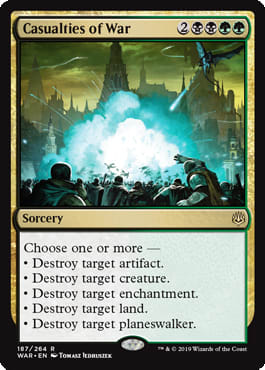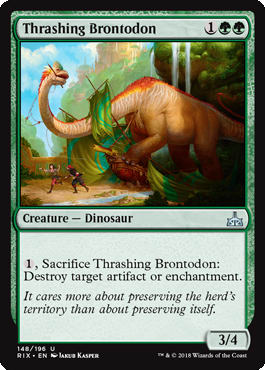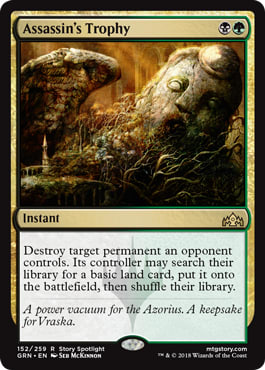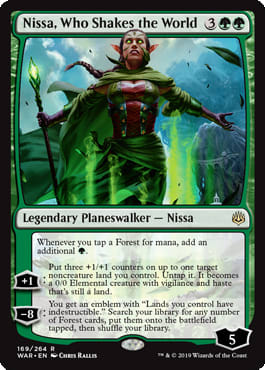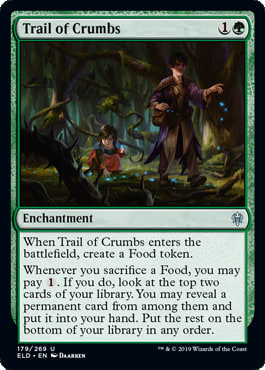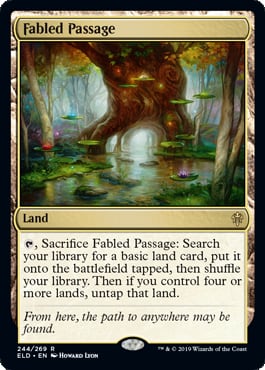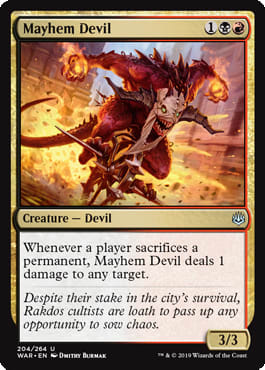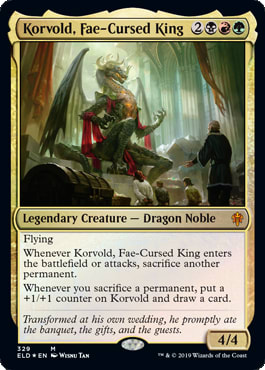It has been a few weeks since Piotr Glogowski won MC7 with Jund Food. Since then the deck has maintained a regular presence on the MTG Arena Mythic ladder, but I have found the results in best-of-one (BO1) lacking compared to best-of-three (BO3) with sideboards. While the deck is certainly powerful and skill-intensive, it takes some time for most of its draws to get the engine going. The deck has a serious weakness to Embercleave, the card that BO1 seems to revolve around, and without some adjustments I found the deck lacked any good matchups on the BO1 ladder aside from the mirror.
What Wasn't Working in BO1
Casualties of War is an awesome effect, and in BO3 it is your best weapon against Jeskai Fires and Simic Ramp, and it is also the card that the mirror match revolves around. When you shift gears and play BO1, a 6-drop is simply unplayable. The cards doesn't keep you alive on turn four when Rotting Register or Questing Beast is swinging with Embercleave. The sorcery never resolves against Simic Flash, Azorius Control, or Izzet Flash. It may as well be blank cardboard. Quicker, cheaper interaction is required.
With Casualties of War on the bench, Beanstalk Giant can follow. Spending more than two mana ramping should be a no-no in the current turn-four-kill format.
Massacre Girl has her moments, but savvy mages know how to keep her from being the board wipe you need, and she can often set you back too much while closing the game too slowly herself. She also has a hard time getting Torbran, Thane of Red Fell and Rotting Regisaur if your opponent plays their cards right.
Of the cards I cut from the deck, Thrashing Brontodon was the best of them. You can run the dinosaur out on turn two with Gilded Goose, or on turn three with one mana to activate it with a Paradise Druid. Being a three-mana creature that makes two Food tokens when you cook it with Witch's Oven is a nice bonus that comes up now and then. In the end I cut Thrashing Brontodon because I had trouble leaving 1 mana open to use it, and because it doesn't interact well with Runaway Steam-kin or Torbran, Thane of Red Fell. If you don't play the MTG Arena BO1 ladder, you may have forgotten that Mono Red exists, but it does.
What is Working in BO1
Midrange decks are in a real pickle in BO1. They need cheap removal, and it has to be flexible enough so that you aren't holding dead cards when you play control decks, and effective enough that you don't die to aggro decks. Enter Assassin's Trophy. It can hit anything, and it punishes a tap-out Embercleave in a similar manner to Unsummon and Brazen Borrower in the Simic Flash BO1 build I wrote about last week. In BO3 the price of giving your opponent a land is so great that most decks don't run any copies of Assassin's Trophy. In BO1 it is still a high price, so don't think of Assassin's Trophy as a turn two removal spell. You need to keep your deck lean and low-to-the-ground so you have plenty of plays on turns two and three, and then you use Assassin's Trophy to remove your opponent's four-mana play while advancing your board at the same time. In other words, Assassin's Trophy is for your double-spell turn. You take out their Questing Beast, or their Embercleave'd critter, or their Nightpack Ambusher, or their Nissa, Who Shakes the World and you play something to press your advantage in the same turn cycle. To make that happen, I stole something else from the Simic Flash playbook.
Someday we will all realize that Nissa, Who Shakes the World should be in every Green deck. The deck's best double spell comes as early as turn three (with a Gilded Goose and a Paradise Druid), when Nissa, Who Shakes the World untaps an Overgrown Tomb to cast Assassin's Trophy on my opponent's best permanent. The amazing planeswalker doesn't need Assassin's Trophy and Overgrown Tomb to be a great play in this deck though. Any time you untap with Nissa, Who Shakes the World you can usually make and eat a lot of food, go through your deck with Trail of Crumbs, or draw a ton of cards with Korvold, Fae-Cursed King. Jund Food has no lack of uses for the extra mana that Nissa, Who Shakes the World provides.
Here is my BO1 list of Jund Food for MTG Arena. If you have struggled with getting the deck to work in BO1 as much as you would like, consider giving this a try.
Jund Food | Standard BO1 | CGB, Dec 22nd 2019
- Creatures (21)
- 3 Korvold, Fae-Cursed King
- 3 Murderous Rider
- 3 Paradise Druid
- 4 Cauldron Familiar
- 4 Gilded Goose
- 4 Mayhem Devil
- Planeswalkers (3)
- 3 Nissa, Who Shakes the World
- Instants (4)
- 4 Assassin's Trophy
- Enchantments (4)
- 4 Trail of Crumbs
- Artifacts (4)
- 4 Witch's Oven
- Lands (24)
- 1 Mountain
- 3 Swamp
- 4 Forest
- 4 Blood Crypt
- 4 Fabled Passage
- 4 Overgrown Tomb
- 4 Stomping Ground
I spent a good amount of time talking about what doesn't work in BO1 for Jund Food, but there is a lot that does work. Any time you can get some amount of Mayhem Devil, Gilded Goose, Witch's Oven, Trail of Crumbs, and Cauldron Familiar together the deck has some serious synergy. Throw a Korvold, Fae-Cursed King on top and you have combos for days. The deck runs into trouble when you have redundant copies of these cards without the other cards to feed them. Therefore, you often want to mulligan hands with two or three copies of an engine card with nothing to go with it. Example:
Opening hand: Witch's Oven, Trail of Crumbs, Trail of Crumbs, Korvold, Fae-Cursed King, Overgrown Tomb, Forest, Fabled Passage.
This hand is too slow for BO1 play against more than 80% of the BO1 field, whether you are on the draw of the play. If you replace one Trail of Crumbs with a Gilded Goose or Cauldron Familiar, you have an engine ready to go on turn two.
Tips
Prioritize lands with Trail of Crumbs.
Like many decks in the current Standard, you will probably die if you miss your third or fourth land drop, so prioritize lands with Trail of Crumbs until you are sure you can curve out. Speaking of lands....
You shock yourself with your lands a lot.
This deck is deceptively low to the ground. It has 12 one-drops! If you have the option to shock yourself to play a card, or play the land tapped and save your life total, shocking is usually right. This deck is very mana-hungry and every second counts. This also means that on the first three turns the mana efficient play is usually the right one, even if you have to play shocklands untapped every turn. That mana you save by casting your spells early can be used to eat Food later in the game to restore your life total.
Don't crack your Fabled Passage until you need to.
The sacrificing of Fabled Passage can trigger Mayhem Devil and Korvold, Fae-Cursed King, so don't sacrifice Fabled Passage until you can use the mana. If you have a use for the mana, don't wait for Mayhem Devil or the legendary dragon, because like I mentioned above you want to use mana every turn, but if you have the choice of sacrificing Fabled Passage to get the mana or playing a shock land untapped, playing the shockland is usually right.
Take your time.
It may annoy a few opponents, but if you want to play Jund Food well you should turn on full control for the turns where you have a lot of moving parts and really take your time. Learning when to sacrifice, what to sacrifice, and how to get the most out of it takes thoughtful practice. Using full control and considering how and when to create sacrifice triggers can help you level-up your game. You will be amazed at how much a Korvold, Fae-Cursed King, a Mayhem Devil, a Trail of Crumbs, Nissa, Who Shakes the World, and a Witch's Oven can do.
Happy grinding with Jund Food, and a Happy Holidays to all of you.














